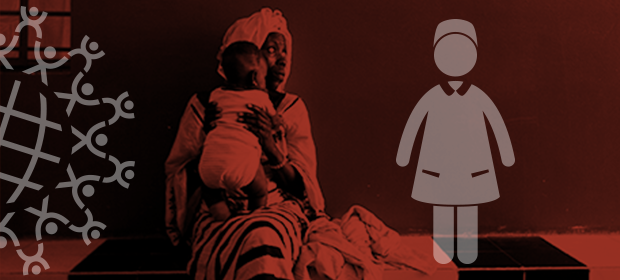Where We Work
See our interactive map


Nurses in rural health facilities in Zambia have so much responsibility leading frontline teams of health workers. We need to rethink the scope of practice for nurses and midwives and better prepare nurses for the realities they will encounter at the primary-care level, particularly in remote communities.
This year, I was part of a research team studying community nursing in Zambia. The opportunity made me re-examine my professional life as a nurse, nurse educator, and a regulator of the profession in Zambia.
Prior to this research study, I always thought nursing care in a rural, community setting followed the hospital model where a nurse reports on duty, has a specific schedule of work for the day, and, most importantly, follows the steps of the nursing process to provide care. This is daily routine for a nurse working in a hospital facility and emphasized in nursing education. But then I came face to face with how nurses work, the roles they assume when providing primary care, and the challenges they face. I was taken aback by the differences between my expectations and their reality.
But then I came face to face with how nurses work, the roles they assume when providing primary care, and the challenges they face. I was taken aback by the differences between my expectations and their reality.
I have never worked at a rural health center or health post. My own training as a nurse concentrated on clinical work and nursing education. After I graduated from nursing school, I worked in a hospital for a few years and then moved to the university to teach. I teach my students clinical skills in a big hospital where there are other multidisciplinary health care professionals. This setting is entirely different from what I witnessed.
On the one hand, I could identify with the rural nurses I met. But it was also difficult to put myself in their shoes and truly understand their experiences. I saw nurses serving their communities in very challenging conditions.
Challenging conditions
In one instance we came across a certified midwife who had no educational preparation in clinical nursing attending to an injured child. I could see the midwife struggling to decide whether to refer the patient to the next level of health care or to keep the child in the rural health post despite the fact that there was an obvious deformity of the child’s affected limb suggestive of a fracture. Nurses and midwives often are expected to provide care outside their scope of practice. Another challenge is amenities that are a necessity but not accessible. One nurse told us that the water the community used for drinking and cooking was “black.” The community had challenges with its water supply, and the nurse is equally affected.
However, even when no other type of health worker was available, the nurse was there, and it was gratifying to see that people appreciate the services this nurse provides. But from what I saw, we must do a better job preparing nurses for these roles—and supporting them once they are in them.
How do we help community nurses optimize the care they are giving?
Nurses at health posts or rural health centers work directly with communities. They have the opportunity to engage in activities that promote health and prevent diseases. For a nurse to have confidence to perform well, he or she must be well prepared and trained for such tasks. It means the curricula and the learning activities must foster innovative ways of providing community health care and independence in learning.
We teach nursing management with a singular view that nurses will work in hospital units and manage other nurses and other cadres below them.
As a nurse educator, this experience was an eye-opener. I have participated in several curricula development and reviews for nurses and midwives in Zambia, but I have never paid much attention to management and leadership skills or the way nurses and midwives are prepared to lead health care teams. We teach nursing management with a singular view that nurses will work in hospital units and manage other nurses and other cadres below them.
However, community nurses lead frontline teams composed of traditional leaders, community based volunteers, and other stakeholders. This is a very different task. We need to change the way we prepare them for this role in terms of curriculum, faculty, teaching and learning activities, and the types of practicum sites and environments they are exposed to during their training. We need to equip nurses with the necessary competence and confidence to work first as clinicians, but also as managers and leaders of diverse teams.
I am a member of the General Nursing Council of Zambia and believe we need to rethink the scope of practice for nurses and midwives. Yes, we have the Nurses and Midwives Act No. 31 of 1997 which provides a legal framework for nurses to practice, and we have incorporated and expanded the scope of practice for nurses and midwives in Zambia. But how are we going to operationalize that? How do we ensure nurses have the right knowledge, skills, and attitudes? How do we monitor to ensure that the public is protected? What do we need to incorporate in the act to protect both the client and the nurse? How do we help community nurses optimize the care they are giving?
As stakeholders in health care, we need to ensure nurses and midwives deployed to rural health facilities are prepared to meet the needs of the communities they serve and provide high-quality care. As a nurse educator, I will strive to teach better and in more meaningful ways to ensure the nursing students who pass through my classroom are able to make an impact in Zambia and beyond as they provide care across very different health care settings.
Read more:
Get the latest updates from the blog and eNews




